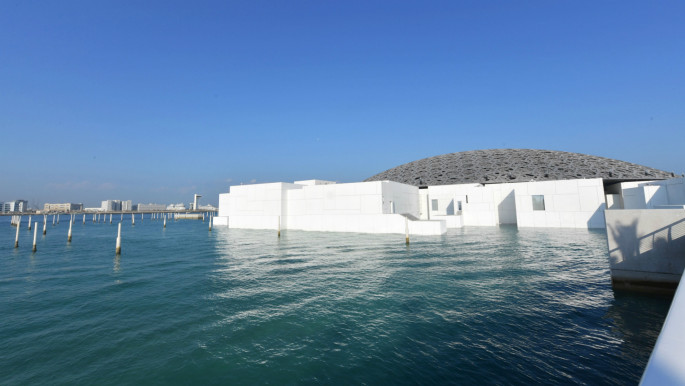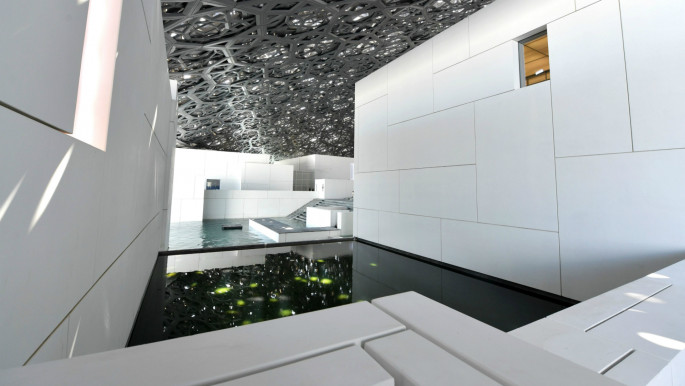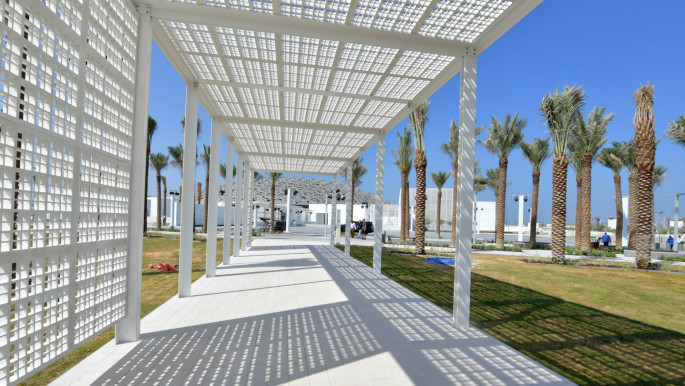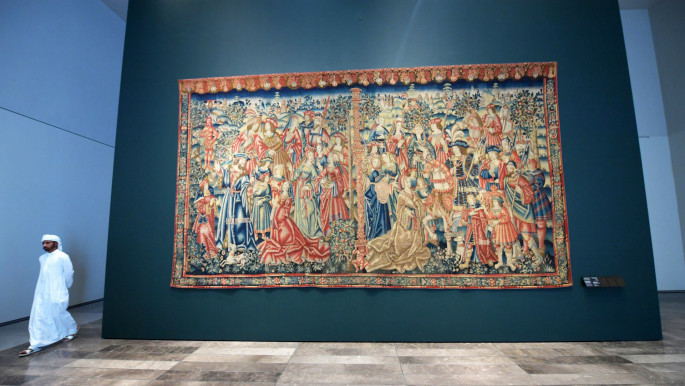Famed Louvre name arrives in Abu Dhabi
French President Emmanuel Macron, who arrives on his first visit to the Middle East for the inauguration, hailed the museum as a "decisive turning point" in ties with the United Arab Emirates in an interview with local daily al-Itihad.
The opening comes a decade after France and the UAE agreed to a 30-year partnership initially reported to be worth $1.1 billion, including nearly half a billion dollars for the rights to the Louvre brand alone.
Abu Dhabi Crown Prince Mohammed bin Zayed Al-Nahyan, with whom Macron is scheduled to meet, hailed the highly publicised museum as a "global cultural monument".
Leaders including Morocco's King Mohammed VI will also be in attendance.
The museum design, by France's Pritzker prize-winning architect Jean Nouvel, conjures up the image of an Arab medina as seen through the eyes of a contemporary cinematographer.
A silver-toned dome with perforated arabesque patterns appears to float over the white galleries, creating what Nouvel describes as a "rain of light".
To reach the ground, each ray of light must cross eight layers of perforations, creating a constantly shifting pattern that mimics the shadows cast by palm trees or the roof of a traditional Arab souk.
Some five percent of the museum, which will open to the public on Saturday, is dedicated to contemporary and modern art, including a monumental piece by China's Ai Weiwei.
His 23-foot-high "Fountain of Light" is a spiralling structure draped in crystals inspired by communist plans for a massive monument that never actually saw the light of day.
The Louvre Abu Dhabi is the first of three museums to open on Saadiyat Island, where the UAE plans to launch the Guggenheim Abu Dhabi, designed by Frank Gehry, and Norman Foster's Zayed National Museum.
300 pieces on loan
The main focus, however, is on world history and religions.
Among the exhibits are an early Quran, a gothic Bible and a Yemenite Torah, facing each other and open at verses carrying the same message.
Jean-Luc Martinez, president of the Louvre in Paris, said the new museum was designed "to open up to others, to understand diversity" in "a multipolar world".
It currently has some 300 pieces on loan, including an 1887 self-portrait by Vincent van Gogh and Leonardo da Vinci's "La Belle Ferronniere".
The oil-rich Gulf emirate has also spent years quietly building its own permanent collection.
|
The Louvre Abu Dhabi is displaying more than 235 works of art from the Emirati collection, including Edouard Manet's "The Gypsy" and works by Dutch abstract artist Piet Mondrian and Turkey's Osman Hamdi Bey.
Authorities have put in place strict measures to protect the art from the heat in a country where summer temperatures soar well above 40 degrees Celsius (more than 100 degrees Fahrenheit).
The artworks are also guarded by Emirati forces in coordination with French experts.
The museum expects to welcome around 5,000 visitors in the first few days which follow the public opening on November 11, according to Mohammed al-Mubarak, chairman of the Abu Dhabi Culture and Tourism Authority.
"Because this is an international museum, we're expecting visitors from around the world," Mubarak said during a media tour ahead of Wednesday's inauguration ceremony.
"So a museum visitor from China will find something that speaks to her, to her history. A visitor from India will find the same."
The Louvre Abu Dhabi project initially sparked heated debate in France, where criticism erupted early on over the sale of a French name to an Arab state.
Questions of labour rights have also hung over the project, linked to the overall status of migrant workers in the Gulf.
UK-based International Campaign for Freedom in the UAE on Wednesday cited a 2015 Human Rights Watch report which documented the "appalling conditions" that the mainly South Asian workforce laboured under, including being liable to arrest and deportation if they complained about the standards.
Migrant workers, who account for more than half the population in the UAE, "have no political or economic rights, leaving them especially vulnerable to mistreatment at the hands of the Emirati authorities", the ICFUAE said.
"It is important that the museum's displays of dazzling grandeur and architectural design do not detract attention from the much wider issue of systematic human rights violations in the UAE."
![Louvre Abu Dhabi [Getty] Louvre Abu Dhabi [Getty]](/sites/default/files/styles/image_345x195/public/media/images/EF0CFF04-17DA-44F2-AD04-9AF6E9346C88.jpg?h=d1cb525d&itok=JDGtHOL0)









 Follow the Middle East's top stories in English at The New Arab on Google News
Follow the Middle East's top stories in English at The New Arab on Google News


